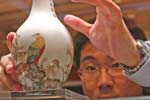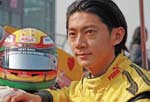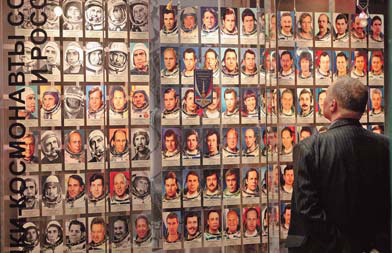Europe
Heavenly gadgets: Spinoffs from space
Updated: 2011-04-11 08:04
By Marlowe Hood and Laurent Banguet (China Daily)
|
A visitor looks at a wall of photographs of cosmonauts on display during the opening of an exhibition at the Memorial Museum of Astronautics in Moscow on Friday. Russia will celebrate the 50th anniversary of Yuri Gagarin's historic first space flight on Tuesday. Alexander Natruskin / Reuters |
PARIS - What do ceramic teeth braces, artificial hearts, airbags, insulin pumps and Olympics-caliber swimsuits have in common?
Answer: They originated in space.
All these gadgets and hundreds more are spinoffs from technologies developed for the multi-billion-dollar space programs that kicked into high gear 50 years ago when Yuri Gagarin became the first human catapulted into orbit.
Many of these offshoots began with a quest by US, Soviet and European engineers for materials that could perform new tasks or withstand extreme temperatures, cosmic rays and the stresses of high or zero gravity.
So-called memory metals, for example, that flex and recover their shape in response to heat are used for shower valves to prevent scalding, surgical staples and tubing for reinforcing arteries called stents.
Sharper-than-steel scalpels, medical implants and even performance-enhancing golf clubs - stronger than titanium as elastic as plastic - are today derived from a related class of space-age alloys called liquid metals.
Likewise the flexible wire rims of your sunglasses, which may also feature a glass coating, developed to protect astronauts' eyes from glint and glare.
Often the product seems quite remote from the technology that spawned it.
When swimwear maker Speedo set about making a faster suit, it turned to experts at NASA Langley Research Institute, who had specialized in studying friction and drag.
The resulting LZR line, launched in February 2008, quickly became de rigueur for competitive swimmers: More than nine out of 10 gold-medal winners at the Beijing Olympics six months later wore them.
Other space-boosted sports gear includes athletic shoes with a cushioning material designed by NASA for its spacesuits.
Healthcare monitoring devices have also been derived from space-related inventions.
Technology once used to gauge the temperature of distant stars and planets now monitors the body heat of humans by measuring, in less than two seconds, energy emitted by the eardrum.
Automatic pumps that continuously deliver micro-doses of insulin - eliminating the need for painful daily shots - are based on NASA satellite components developed for the Viking Mars mission.
Technology created to track the health of astronauts in deep space has now been integrated into fitness machines: An infrared heartbeat transmitter strapped against the chest uses the heart rate to directly modulate exercise intensity.
And an artificial heart-pump, 10 times smaller than earlier models, was inspired directly by systems that monitor fuel consumption on space shuttles.
Agence France-Presse
Specials

Share your China stories!
Foreign readers are invited to share your China stories.

Art auctions
China accounted for 33% of global fine art sales.

Waiting for drivers' seat
Lack of sponsorship appears to be why Chinese drivers have yet to race in a Formula 1 event
